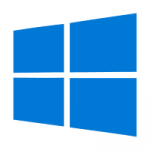 Microsoft is finally waking up to what we’ve all been saying since before Windows 10 was released: forcing operating system updates on users is not a good idea. Amusingly, they are presenting their findings and announcing related changes as if these things were previously unknown to the world of computing.
Microsoft is finally waking up to what we’ve all been saying since before Windows 10 was released: forcing operating system updates on users is not a good idea. Amusingly, they are presenting their findings and announcing related changes as if these things were previously unknown to the world of computing.
Microsoft refers to the process of installing Windows updates as an ‘experience’, and uses adjectives like ‘great’ when describing what they want the experience to be like for users. I don’t know about you, but I’ve never thought about installing updates as a ‘great experience’. Nightmarish, never-ending, endurable, and dreaded are more familiar ways to describe my update experiences. The word I’d most like to use in connection with updates is ‘uneventful’.
Note: phrases like ‘great update experience’ were no doubt vetted by some Microsoft committee. Microsoft writers are presumably encouraged to use these phrases — and avoid negative terminology — when discussing Windows updates.
Microsoft still seems unable to understand what people actually want to ‘experience’ from a Windows update:
- We don’t want updates at all, really. We want software to not be full of security holes in the first place. But that’s a fantasy, and will never happen (sigh).
- We want updates to not cause problems. Ever.
- Updates should install quickly, and with minimal fuss. Giant downloads, massive storage requirements, lengthy update durations, and high CPU usage are unacceptable.
- It should be possible to easily, quickly, and effectively revert updates.
- Automatic updates are a nice option, but only if we have full control over when they occur.
Upcoming Windows Update changes
- Download and install now option: a new option on the Windows Update page that installs ‘feature updates’, which provide new or improved functionality. Using this option effectively updates Windows 10 to the latest version in terms of features, without installing any bug or security fixes. According to Microsoft, it’s a way to get the latest features without installing anything potentially risky.
- Extended ability to pause updates. This further extends your ability to delay installation of updates, although it’s still limited: you can delay an update up to 35 days (seven days at a time, up to five times). This one is important for Windows 10 Home users, because the feature was previously unavailable on that version.
- Intelligent active hours. The ‘active hours’ setting, which was added in the Anniversary Update, allows you to specify a window of time during which updates should never occur. This will now adjust itself automatically, based on when it thinks the computer is actually being used. This sounds good, but in practise, it may cause more problems than it solves. We’ll see.
- Improved update orchestration. This new feature will detect device usage, and attempt to install updates when utilization is low, such as when there is no user activity.
For additional details on the upcoming changes, see Microsoft’s recent Windows blog post, titled “Improving the Windows 10 update experience with control, quality and transparency“.
Other Windows Update changes are being tested and may appear in upcoming releases of Windows 10, such as the ability to automatically roll back a problematic update.
These are all welcome changes, but I’m hoping Microsoft goes even further. If the Windows 10 update process improves enough, I may even consider installing it again. For now, there are still too many problems, such as Windows Update’s excessive use of disk space.
At least Microsoft is listening to the complaints about update dialogs popping up over important presentations, and worse. And they’re being surprisingly transparent during this current round of Windows improvements. Several recent Windows update problems (like this one in March and the known issues with this April update and this one) were probably the main impetus behind the changes, though.
Update 2019Jun03: The May update has arrived, and Windows 10 Home users are not impressed with the minor improvements to Windows Update.
 boot13
boot13